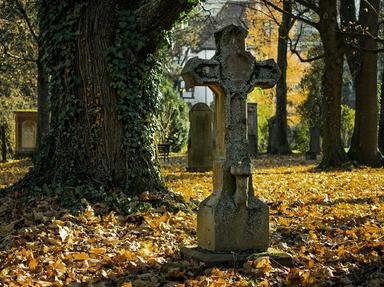Quiz Answer Key and Fun Facts
1. What beloved American author and humorist, best known for "The Adventures of Tom Sawyer" and "Adventures of Huckleberry Finn," died of heart failure on April 21, 1910 at the age of 74?
2. This Bohemian-born Austrian composer and conductor was known for his larger-than-life symphonies and his leadership of the Vienna Court Opera. What composer, whose most beloved works include "Symphony No. 2 (Resurrection)" and "Lieder eines fahrenden Gesellen" died of bacterial endocarditis in Vienna on May 18, 1911, at the age of 50?
3. Nicknamed "the father of modern surgery", what British surgeon whose pioneering use of antiseptics transformed medicine and drastically reduced post-surgical deaths, died on February 10, 1912 at the age of 84?
4. What American abolitionist and humanitarian, once enslaved in Maryland, escaped to freedom and then returned south numerous times to guide others along the Underground Railroad before dying of pneumonia on March 10, 1913, at about 90 years old?
5. This American inventor and industrialist is best known for inventing the railway air brake and founding an eponymous electric company to promote alternating current. What pioneer of AC died of heart failure on March 12, 1914, at the age of 67?
6. What British nurse, remembered for providing aid for both sides and for helping Allied soldiers escape from German-occupied Belgium during World War I, was executed by firing squad on October 12, 1915, at the age of 49?
7. What self-proclaimed Russian holy man and mystic, who gained influence over Tsar Nicholas II and his family, was murdered in St. Petersburg on December 30, 1916, at the age of 47?
8. What American admiral, remembered as the hero of the Battle of Manila Bay during the Spanish-American War, died at 79 on January 16, 1917?
9. What Bosnian Serb nationalist, who fired two shots in Sarajevo on June 28, 1914, setting off a chain of events that began World War I, died of tuberculosis in prison on April 28, 1918, at age 23?
10. Which French painter, a leading figure of the Impressionist movement known for "Luncheon at the Boating Party" and "Dance at Le Moulin de la Galette", died at age 78 of heart failure on December 3, 1919?
Source: Author
JJHorner
This quiz was reviewed by FunTrivia editor
gtho4 before going online.
Any errors found in FunTrivia content are routinely corrected through our feedback system.
